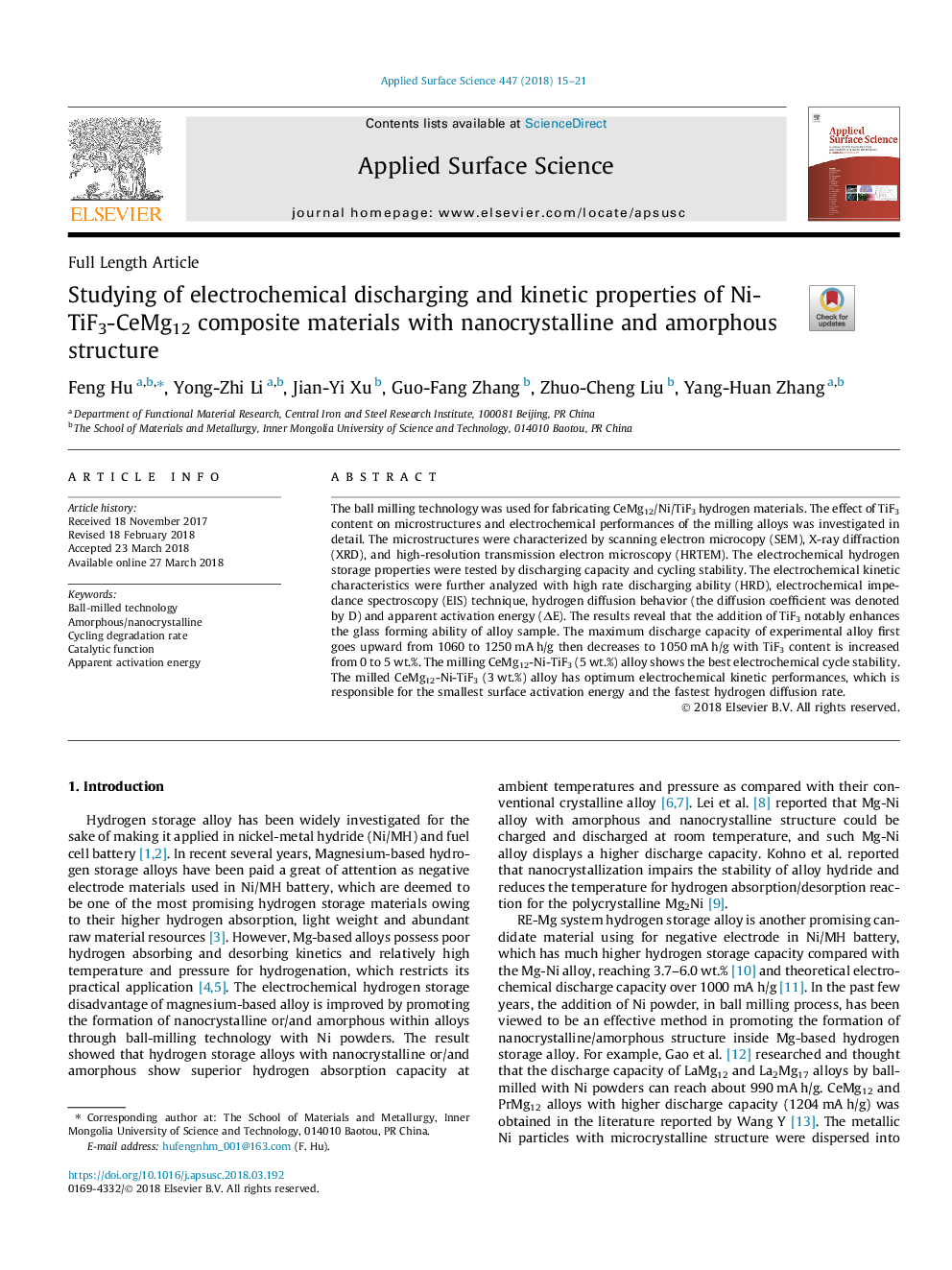| Article ID | Journal | Published Year | Pages | File Type |
|---|---|---|---|---|
| 7833933 | Applied Surface Science | 2018 | 7 Pages |
Abstract
The ball milling technology was used for fabricating CeMg12/Ni/TiF3 hydrogen materials. The effect of TiF3 content on microstructures and electrochemical performances of the milling alloys was investigated in detail. The microstructures were characterized by scanning electron microcopy (SEM), X-ray diffraction (XRD), and high-resolution transmission electron microscopy (HRTEM). The electrochemical hydrogen storage properties were tested by discharging capacity and cycling stability. The electrochemical kinetic characteristics were further analyzed with high rate discharging ability (HRD), electrochemical impedance spectroscopy (EIS) technique, hydrogen diffusion behavior (the diffusion coefficient was denoted by D) and apparent activation energy (ÎE). The results reveal that the addition of TiF3 notably enhances the glass forming ability of alloy sample. The maximum discharge capacity of experimental alloy first goes upward from 1060 to 1250â¯mAâ¯h/g then decreases to 1050â¯mAâ¯h/g with TiF3 content is increased from 0 to 5â¯wt.%. The milling CeMg12-Ni-TiF3 (5â¯wt.%) alloy shows the best electrochemical cycle stability. The milled CeMg12-Ni-TiF3 (3â¯wt.%) alloy has optimum electrochemical kinetic performances, which is responsible for the smallest surface activation energy and the fastest hydrogen diffusion rate.
Related Topics
Physical Sciences and Engineering
Chemistry
Physical and Theoretical Chemistry
Authors
Feng Hu, Yong-Zhi Li, Jian-Yi Xu, Guo-Fang Zhang, Zhuo-Cheng Liu, Yang-Huan Zhang,
